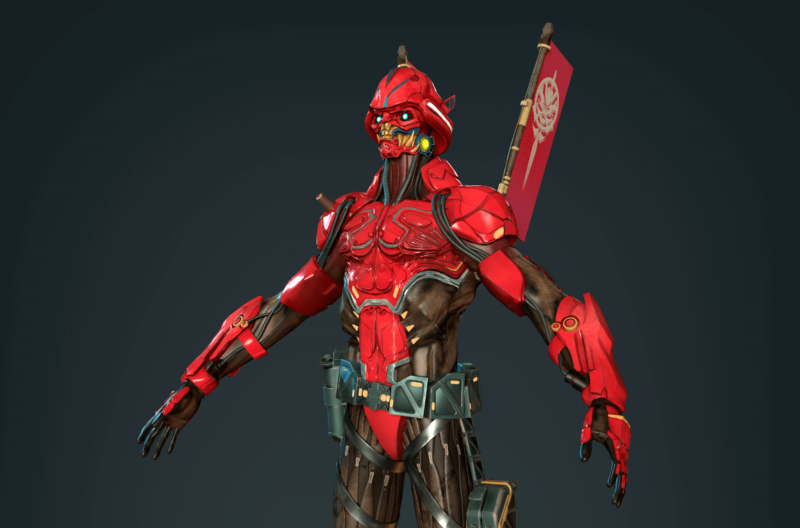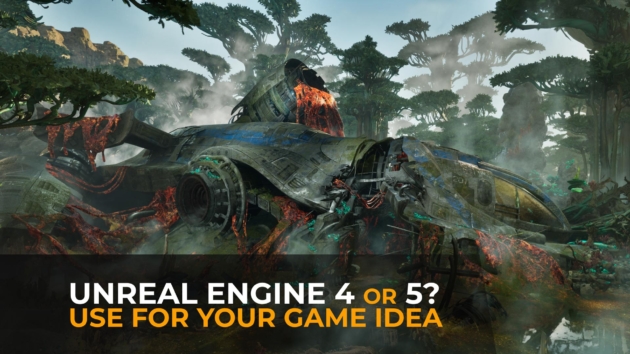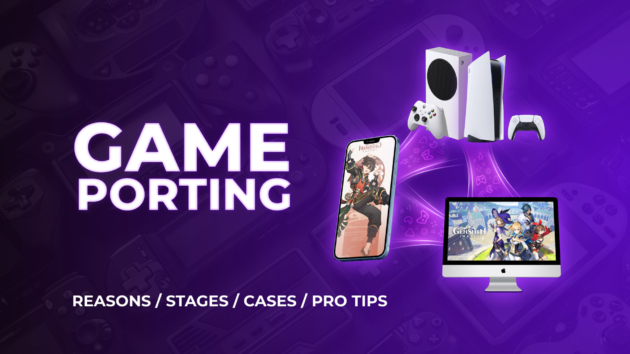3D character modeling is a multi-stage process in which a 3D artist uses various software and tools to create a game character or other media. The creation of modern games, movies, and even commercials is almost inseparable from CG technology, one of the directions of which is the modeling of characters. The main stages of the pipeline consist of:
- Concepting
- Blocking
- Sculpting
- Retopology
- UV unwrapping
- Baking
- Texturing
- Rigging & Skinning
- Animation
- Rendering
Today we will rely on our personal experience to show you what a 3D model of a character is in great detail, how it works, how it’s created, and a few designer secrets and lifehacks.
How does 3D modeling work?
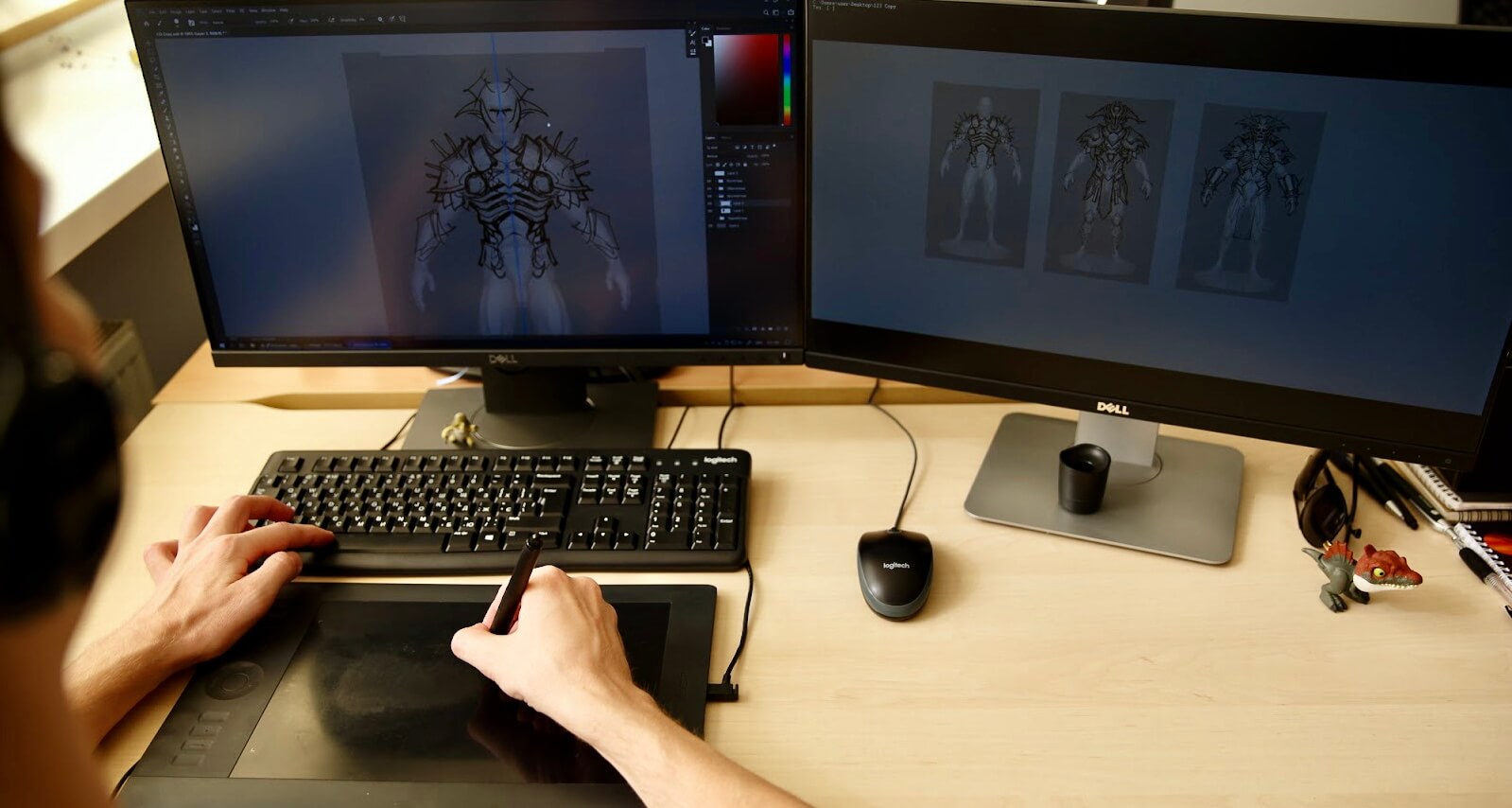
To choose the right pipeline, you will first need to understand what exactly you want to achieve and what your expectations are of a result (needed to choose the right realization technique).
There are many techniques for creating 3D characters. For example, we can highlight the 2 biggest ones. To start, let’s choose a pre-render of characters, and then a true 3D model. In addition, these areas of creation can be more detailed or less detailed. Remember which game engine is used with which rendering pipeline – everything depends on the result you need.
The character is usually a human, animal, robot, or mythical creature. Plus, they can be either the main character (the player controls it during the game) or a secondary character (the creatures with whom the player interacts) or can even exist on the periphery alone.
So, let’s focus on our version, where we need to create a 3D character model for a 3rd-person camera view for PBR. PBR stands for Physically Based Rendering. The main idea is to use multiple texture maps to control the different properties of the material, determining how the material reacts to light. This method of material creation is widely used in rendering.
What is Polygonal modeling?

It is divided into a highly polygonal (detailed model with a large number of polygons) and a low-polygonal (schematic model with a small number of polygons), making it optimal for use in games.
Polygonal modeling is a low-level simulation that visualizes an object using a polygonal grid. It may often seem easy to work with them. It has a clearly defined external and internal area, and no additional parameters and calculations need to be made.
However, this method requires a lot of patience and perseverance because to create even the simplest three-dimensional model, it is necessary to make thousands of clicks with a mouse. The smallest error can spoil all your hard work, and it is difficult to remake the finished object. Because of this, it is important to be as careful and accurate as possible.
Polygonal grids consist of such sub-objects:
- Vertex (the point of joining the edges. There can be any number of them);
- Edges (lines protruding from face borders);
- Polygons (grid cells, plane sections, that are most often triangular or quadrangular in shape).
Detailed step-by-step 3D character design process
Designing a 3D character is complex, yet fun! Let’s have a closer look at each step of this process.
3D character concept
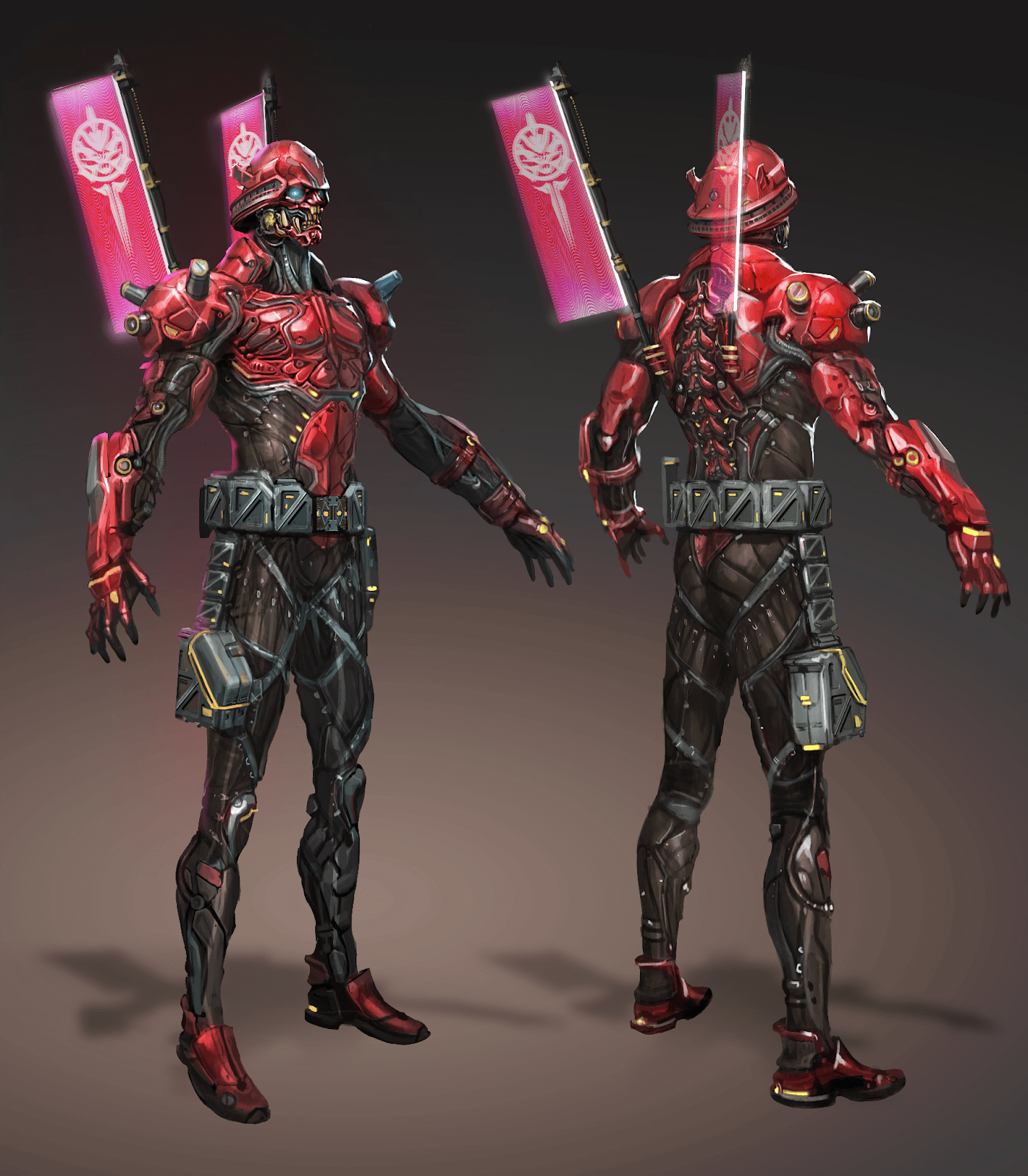
Before you start creating a character, you need to brainstorm about their story and how to picture it through this person. To do this, collect a variety of references to understand who you’re going to create and how. Plus, it’s much better to work on a playable character when you know their history and background and what makes them unique.
When you collect the ideas and the necessary references, concept artists come into play. Their main goal is to give the primary look to game characters and set the tone for their further development.
3D character Blocking
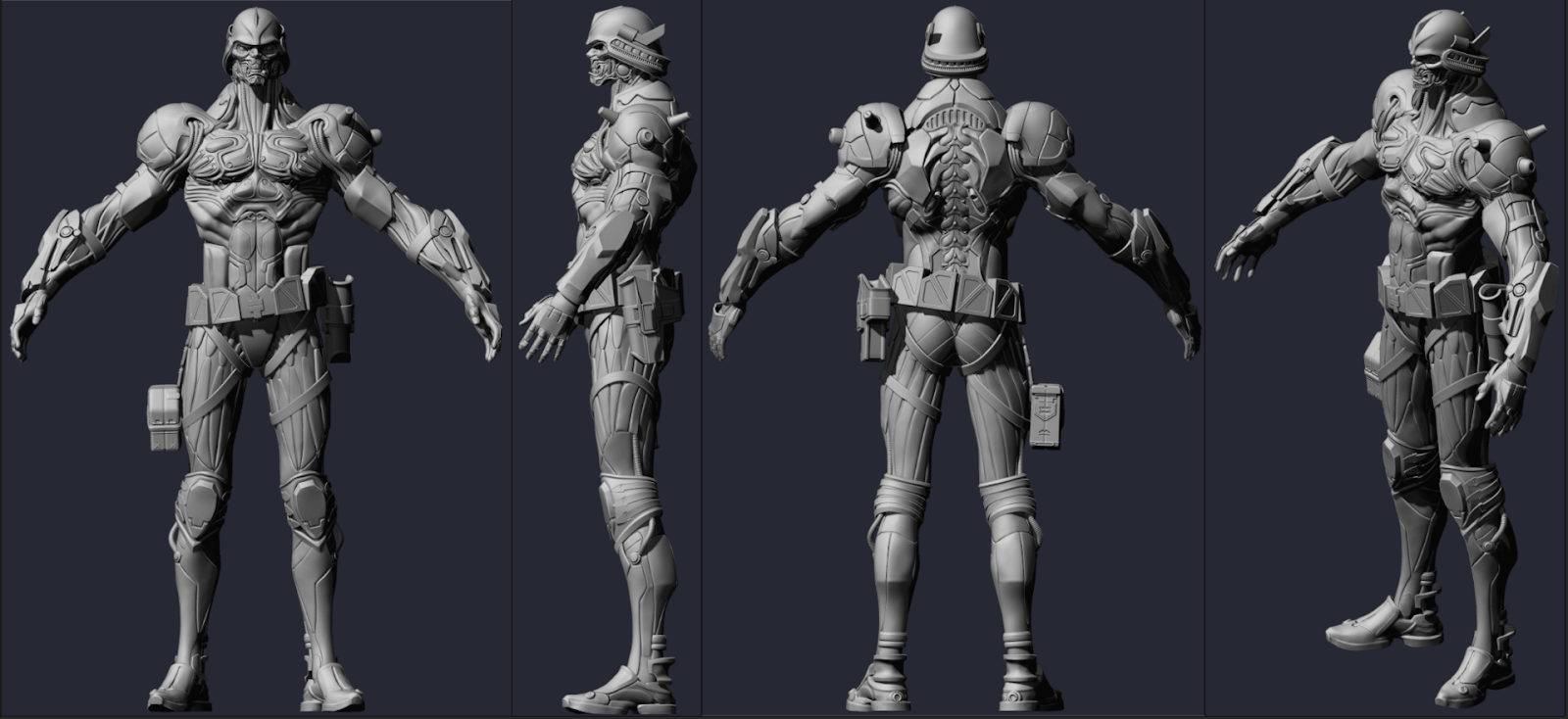
Tip: You can begin to create your 3D model by combining the primitive forms into the desired character form. This will give you an idea of what your character will look like.
3D character sculpting
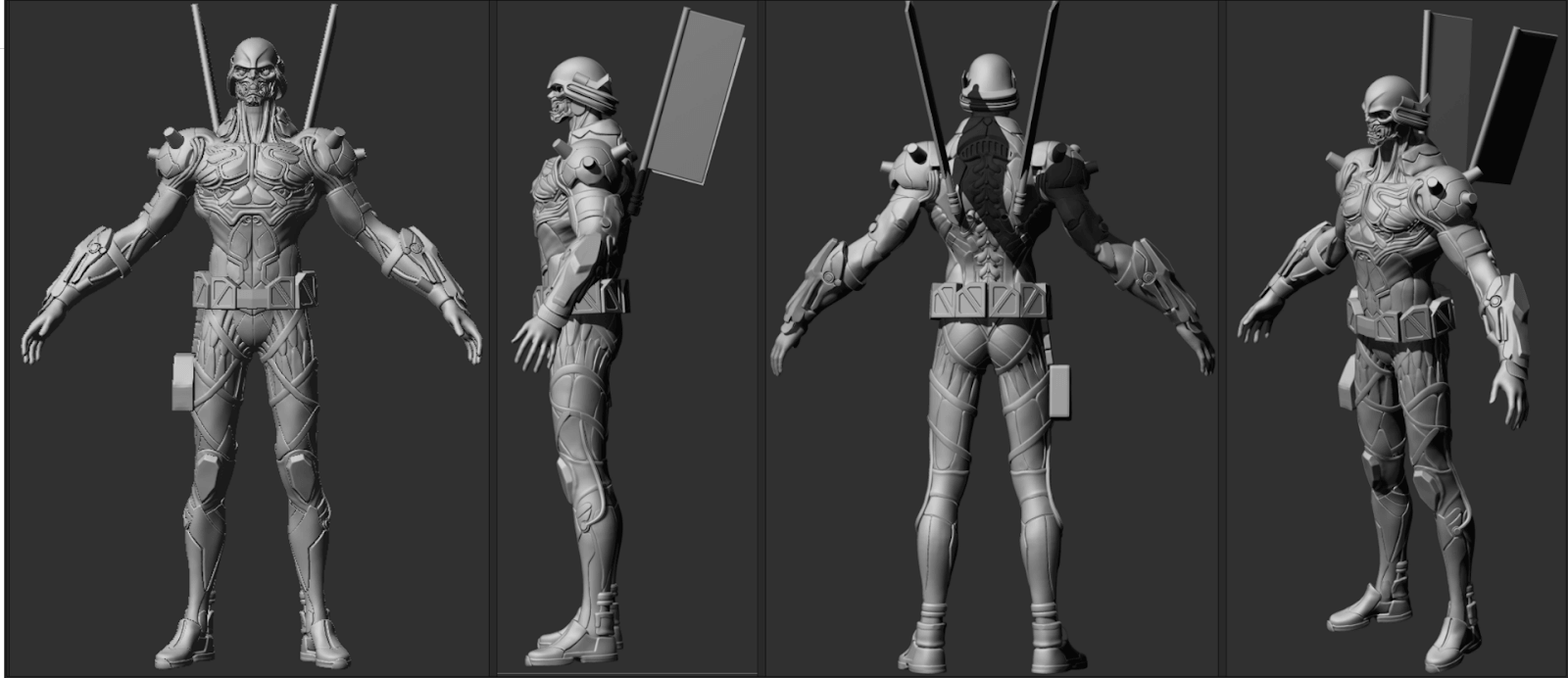
When you start sculpting a character, you have a smooth model that doesn’t have the features yet, and it’s the 3D artist’s job to create them.
Creating a 3D Character Retopology
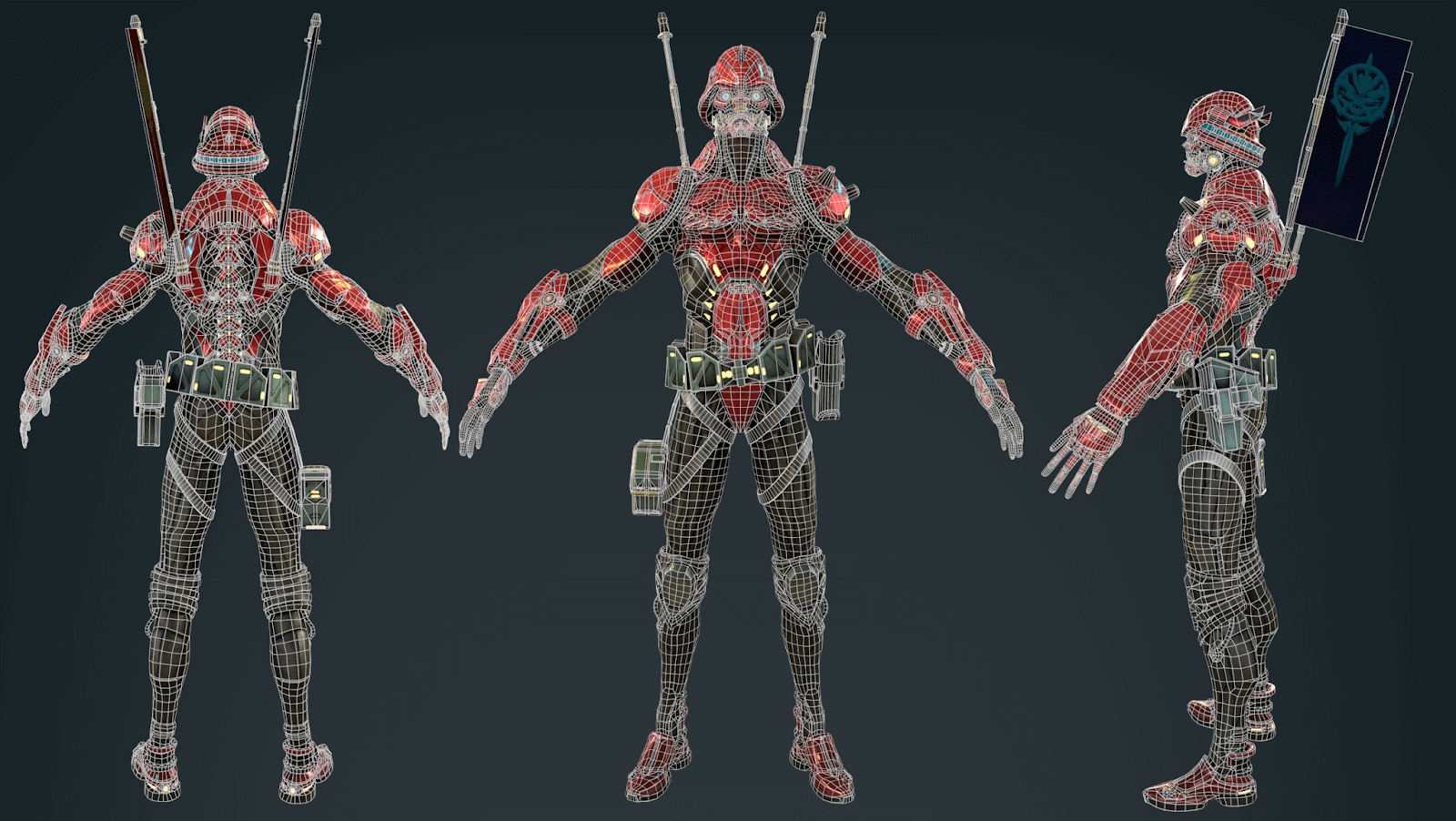
The topology of the game character is a surface structure that defines the model’s visual characteristics.
Most often, the topology of the 3D model is created using polygon modeling. Because polygons can have multiple angles, it is essential to choose a shape that allows you to easily edit and animate individual pieces of the shape.
Nowadays, there is constant development in automatic programs and plugins, alleviating 3D artists’ work. Creating 3D animations is an engaging yet complex process. Should you feel uncertain about your current skill level, it’s advisable to seek assistance from experts or invest in specialized training programs. Regardless, mastering 3D modeling demands consistent dedication and hard work.
We know exactly how to create your perfect art
Contact usUV unwrapping
Baking is the process of saving information from a 3D mesh, to a texture file (bitmap).
Most of the time, this process involves two meshes, a high poly mesh and a low poly mesh:
- A high poly mesh has many polygons (often millions) which means it can display high-resolution 3D detail.
- The low poly mesh has far fewer polygons (usually only a few thousand), so it is cheaper to store and render.
Baking textures allow you to get the best of both worlds: the high level of detail from the high poly mesh and the low performance costs of the low poly mesh. In the baking process, the information of the high poly mesh is transferred onto the low poly mesh and is saved into a texture.
General mesh maps are Normal map, world space normal, ID, Ambient Occlusion, Curvature, Position, Thickness, and Emissive.
Texturing 3D models
It would seem that it is too difficult and uninteresting to create textures. But most artists will disagree with you. Texturing is one of the most important steps in the construction of a 3D model. At this stage, the surfaces of the object model are given the necessary properties to make it more realistic.
Most textures are used to demonstrate the physical capabilities of the created model, make the object natural-looking and revitalize the game. One of the main functions is to create small details (folds on clothes, wrinkles, shadows, facial features, etc.). We at Stepico actively use substance painter and designer packages for creating the best visuals for our clients.
Tip: Use MIP texture is a texture application method (3D mapping) that uses multiple copies of a single texture image but with different levels of detail.
Rigging and skinning 3D character models
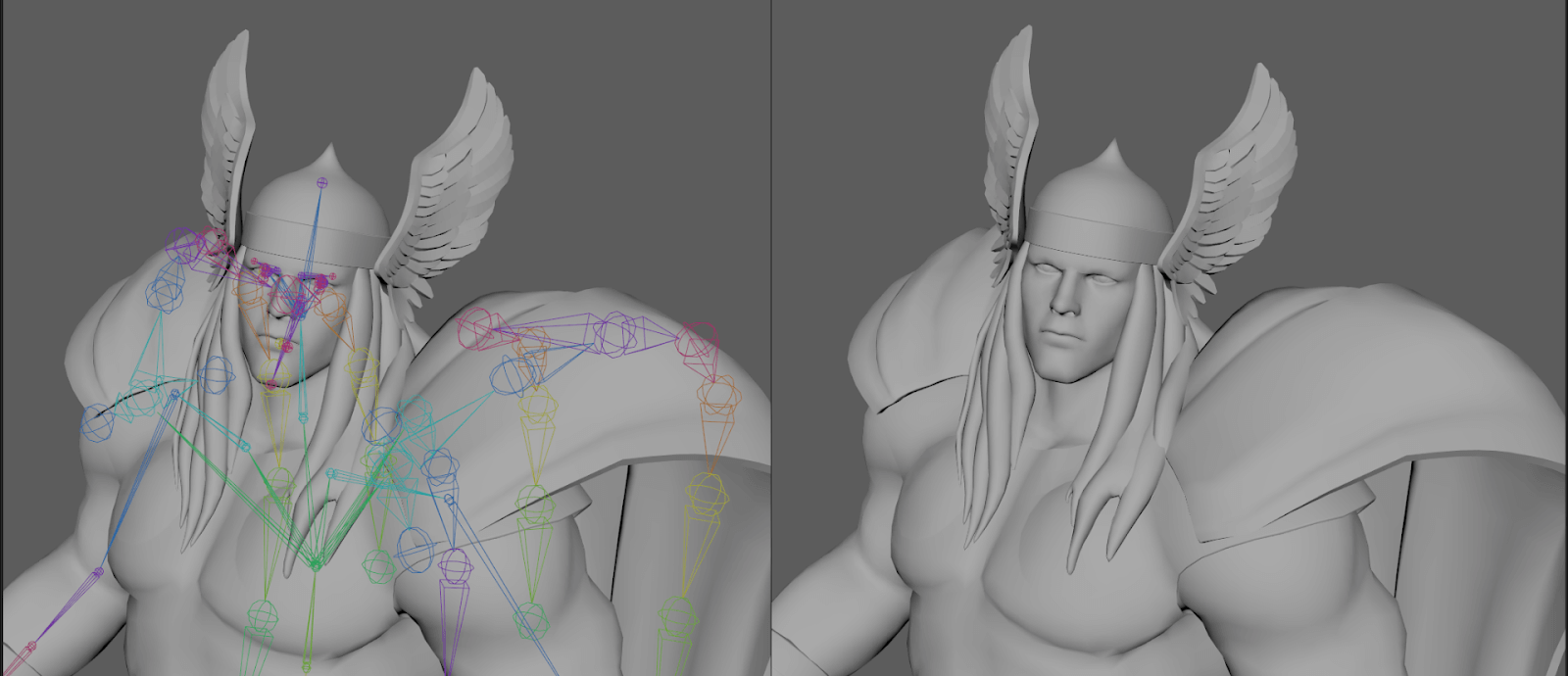
The rigging process involves creating a character skeleton. This is necessary in order to animate a separate skeleton or bone in the future and thus make the 3D model of a person move.
After the rigging, the skinning comes. In other words, at this stage, the skeleton becomes part of the character, which means that they can now move.
Character Animation in 3D
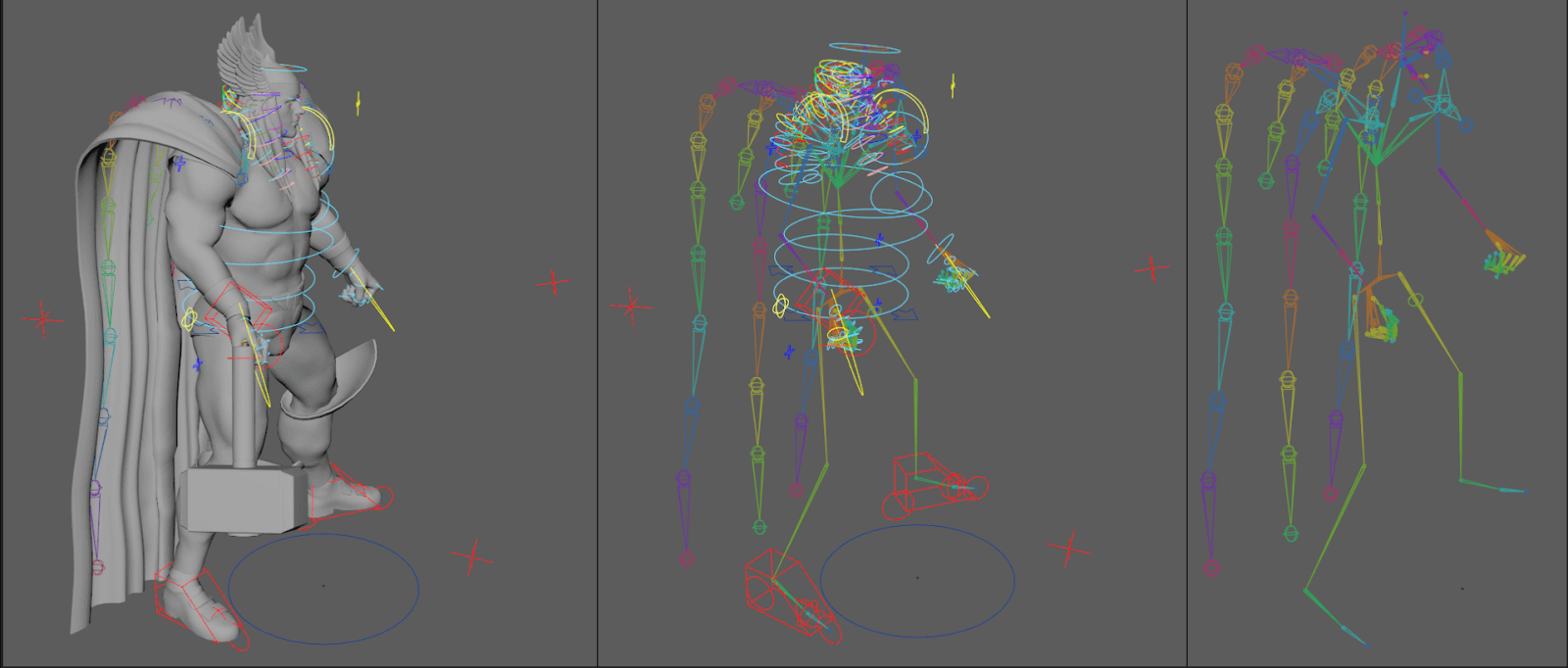
Model animation is an important final step in character creation. Artists animate the body movements of the characters, as well as create facial expressions to breathe life into them. When working on facial expressions, gestures, and movements, special tools are often used to manipulate parts of the body.
The best result in animating movements can be obtained using motion capture. We have extensive experience working with ready-made mockups and keyframe-animation.
Lighting 3D character
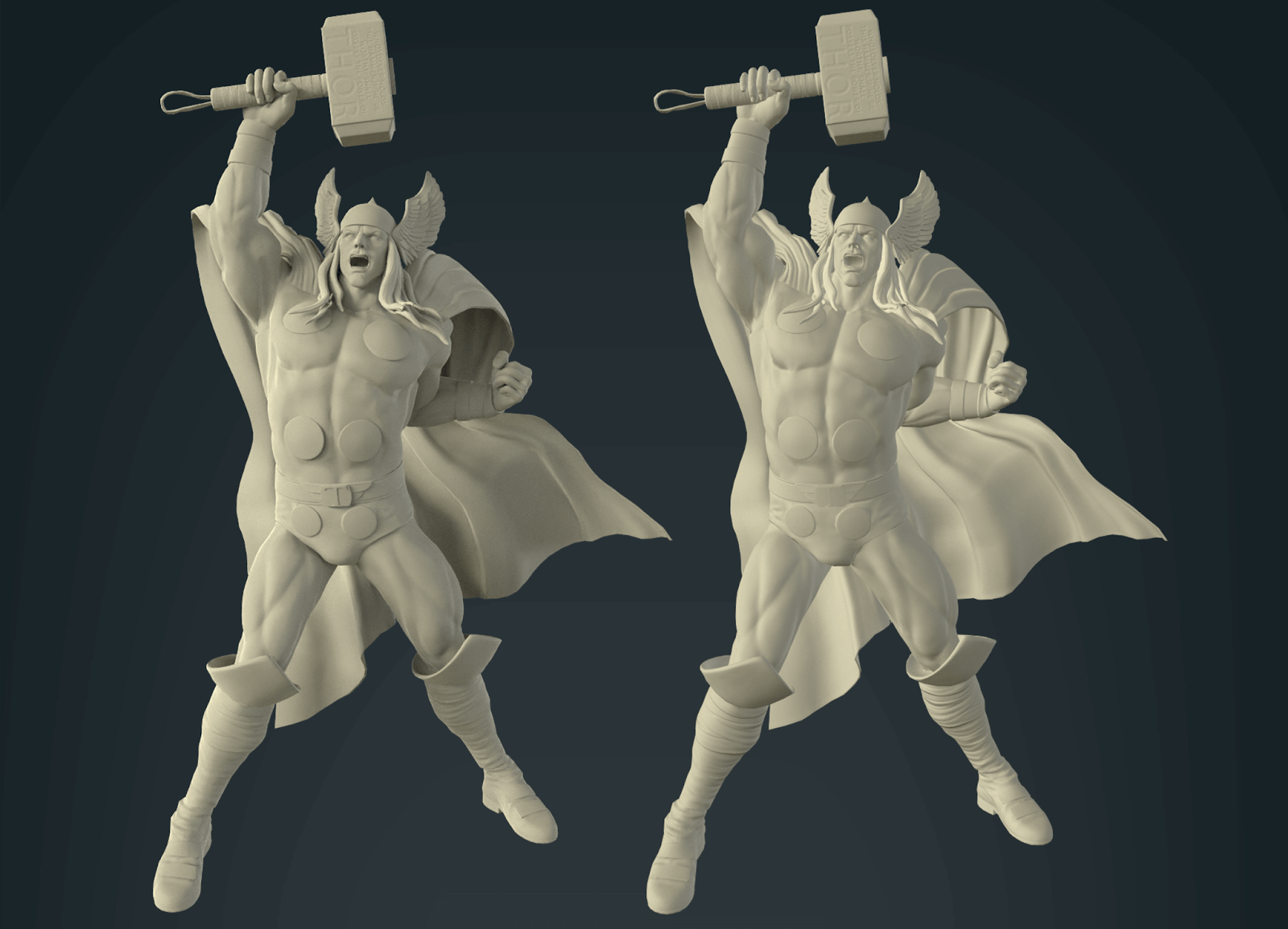
Effective lighting can heighten a scene by depicting the position, time of day, emotions, mood, and behavior of the shot. The idea is to make the 3D model look more realistic and satisfying. A lighting artist can use lighting to manipulate the bystander on where to concentrate when exploring the game terrain or the 3D character model.
Tip: Use Ambient occlusion to make deep parts of our render more lifelike and emphasize light parts. But do not exaggerate.
3D character rendering
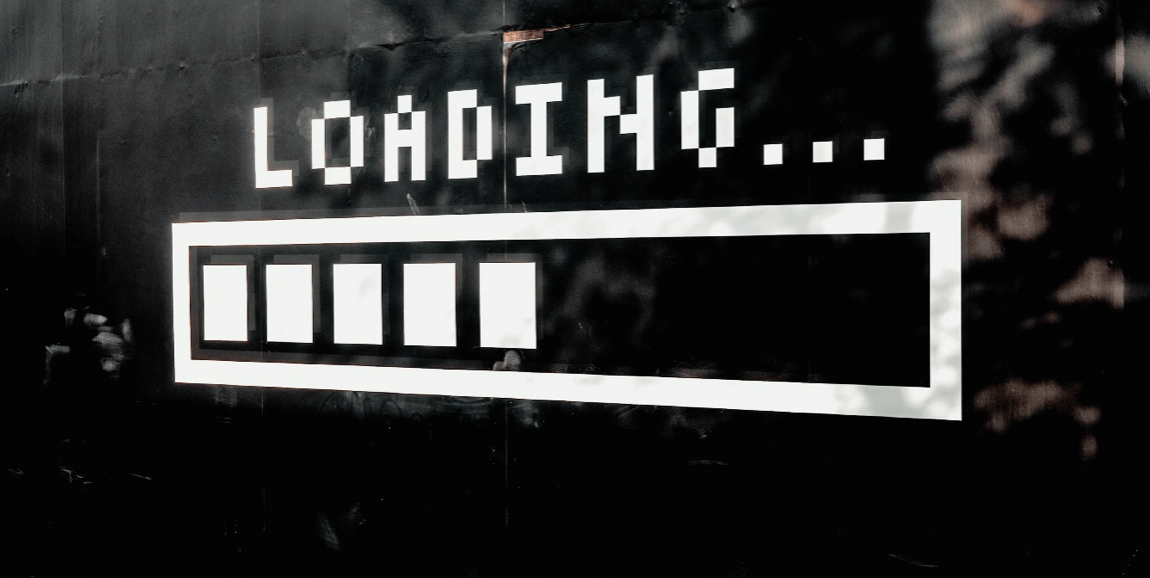
It’s a process where an artist creates a scene for a 3D model using computer graphics and converts it into a 2D image. Artists adjust the illumination of the image, the direction of the camera, and the texture of the frame.
LifeHack. Some 3D artists use separate hardware for rendering – this allows them to continue work with another modeling on the main computer, while the rendering can take hours on the secondary one.
Export to the game engine
The final stage is the export of the finished game model to the engine (Unreal, Unity, etc.). The common file types 3D artists use are FBX and OBJ.
Tip. If you want to preserve the object hierarchy in one intact package, use the FBX file type. This is crucial if your mesh has movable elements or if you need certain pieces that can be divided in the game.
What is the best software for 3D character modeling?
For designing a 3D character, developers use a wide range of software for 3D modeling and rendering. The perfect match for some of them is:
- 3ds Max
- Autodesk Maya
- Houdini
- Daz Studio
- ZBrush
- Blender
How Much Does It Cost to Create a 3D Game Character?
So, you’ve decided to create your own signature character, but you’re not sure where to begin or how much it will cost. Let’s figure out what is what.
The trademark character is usually an enthusiastic hero who has unique traits, appearance, and habits. Through their interaction with the consumer, they express the image of the protagonist, company, or brand. If we’re talking about 3D characters, they’re more realistic and dynamic, compared to 2D characters. They are used in games and often in the vast expanse of Internet advertising.
The characters can be:
- рeople;
- аnimals and plants;
- invented and non-existent creatures (for example, monsters or aliens);
- machinery (robots);
- mythic creatures;
- other inanimate objects.
The price of the game character depends on the complexity of the model, quality of the character, presence of additional artifacts, skins, and variety of movements.
How long does it take to 3d model a character?
The time to produce a 3D character depends on numerous factors, like the position of complexity, the experience of the modeler, etc. Keeping in mind these factors, it can take roughly 100 to 200 hours. Let’s see the steps you have to take to model your character.
Five steps of character modeling
- Model simulation or geometry
It’s about creating a three-dimensional geometric model, without taking into account the object’s physical properties.
- Texturizing an object
The level of realism of the future model depends directly on the choice of materials when creating the textures. Professional programs for working with 3D graphics are almost unlimited in their ability to create a realistic picture.
- Light and observation point
The choice of light tone, level of brightness, sharpness, and depth of shadows. This directly depends on the realistic perception of the image. In addition, you must select a monitoring point for the object. This can be a bird’s-eye view or a scaling of space to achieve a presence effect.
- 3D visualization or export to a game engine
The final stage of 3D modeling. It consists of detailing the display settings of the 3D model. That is the addition of graphic special effects such as glare, fog, glow, and others.
- Post-production
This is the processing of images and videos with the help of media editors. Post-production is about giving media files original visual effects. The main goal of this stage is to arouse the consciousness of the potential consumer: to impress, to stir interest, and to be remembered for a long time.
Benefits of game art outsourcing
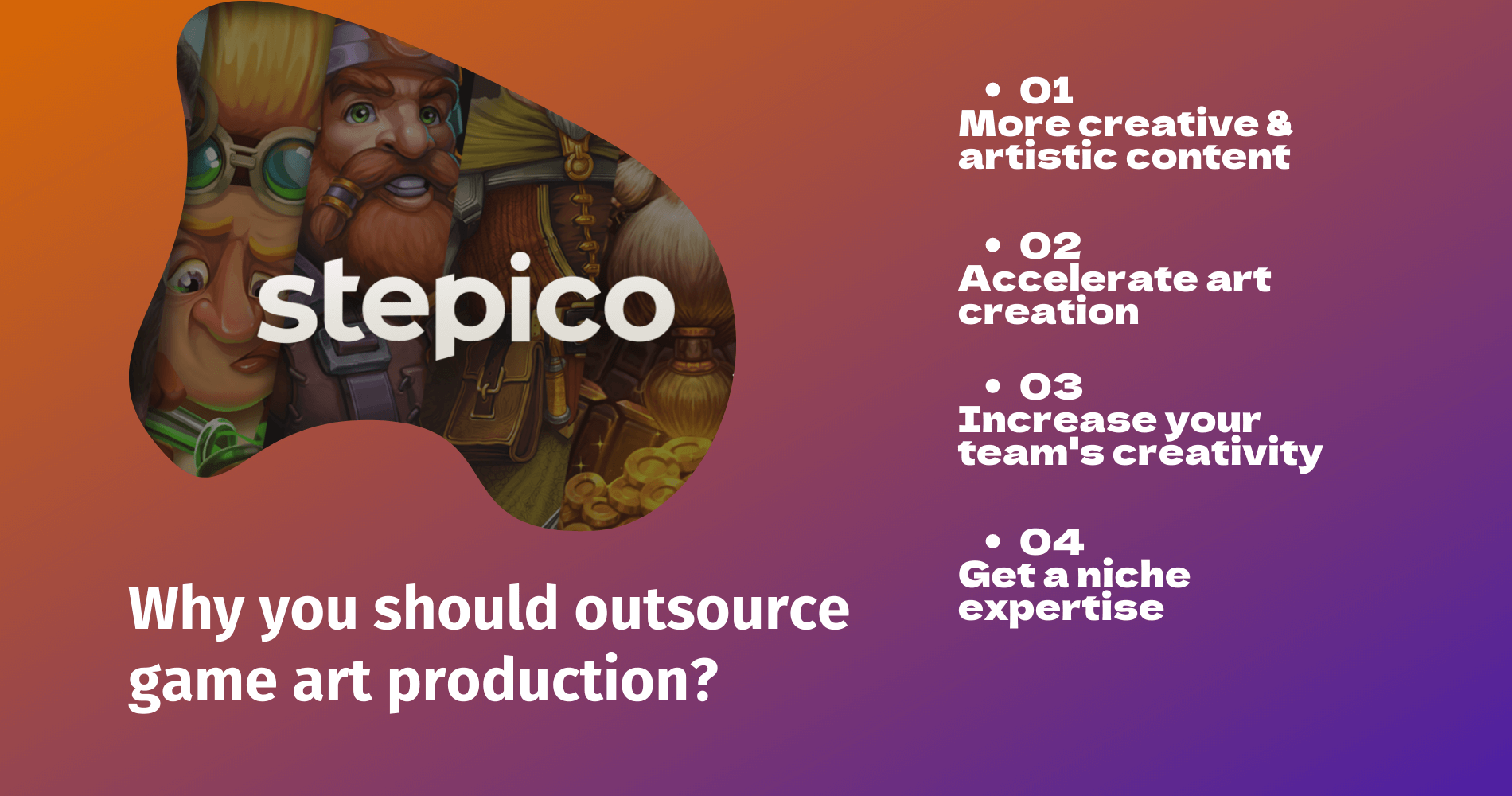
It is quite common for game companies to lack experienced, competent artists and designers who can do top-notch art. This is why it is important to delegate this part of the vendor. One of the biggest advantages is that you get a complete game art & design solution, and a professional team in one place. Here is an example of the tasks that you can cover if you outsource art production:
- Make creative, artistic content
GET GREATE ART for YOUR PROJECT in ONE CLICK
Contact usA team of professionals will be able to highlight your product among other games, regardless of which genre you choose. They can even come up with a completely new genre for your project so that it will impress your audience beyond any doubt.
- Accelerate art creation
Vendors fully understand that you may not have enough time and other resources to complete the project on time. Therefore, these teams are ready to accelerate the process on-demand, thanks to their extensive experience in the field.
- Increase your team’s creativity
Most outsourcing companies work on a large number of projects of different genres, so they are usually willing to share their ideas and skills to make your product the best on the market.
- Get a niche expertise
If you choose an expert company, they will cherrypick the developers and artists to make a 100% skill match for your project. Cooperating with large and well-known outsourcing companies like Stepico immediately increases your authority and expertise.
3D character design services with Stepico
Nowadays, in a large talent pool, it is difficult to hire adept character designers who will be able to create the desired model quickly and efficiently. A good option is to look for a 3D design studio, which is no easy task.
This is where Stepico steps up. Our studio is actively developing different types of models for games in various genres. You can see our bright artwork in our game art portfolio. Also, you can visit our Behance and ArtStation and get a portion of inspiration. Our designers and developers are among the best professionals in the world, having worked with leading game distributors like Gameloft, Universal, Immutable, DreamWorks, and others.
Let’s discuss your project and bring your most exciting ideas to life! Be sure that you will achieve your creative vision in the shortest period with us.
